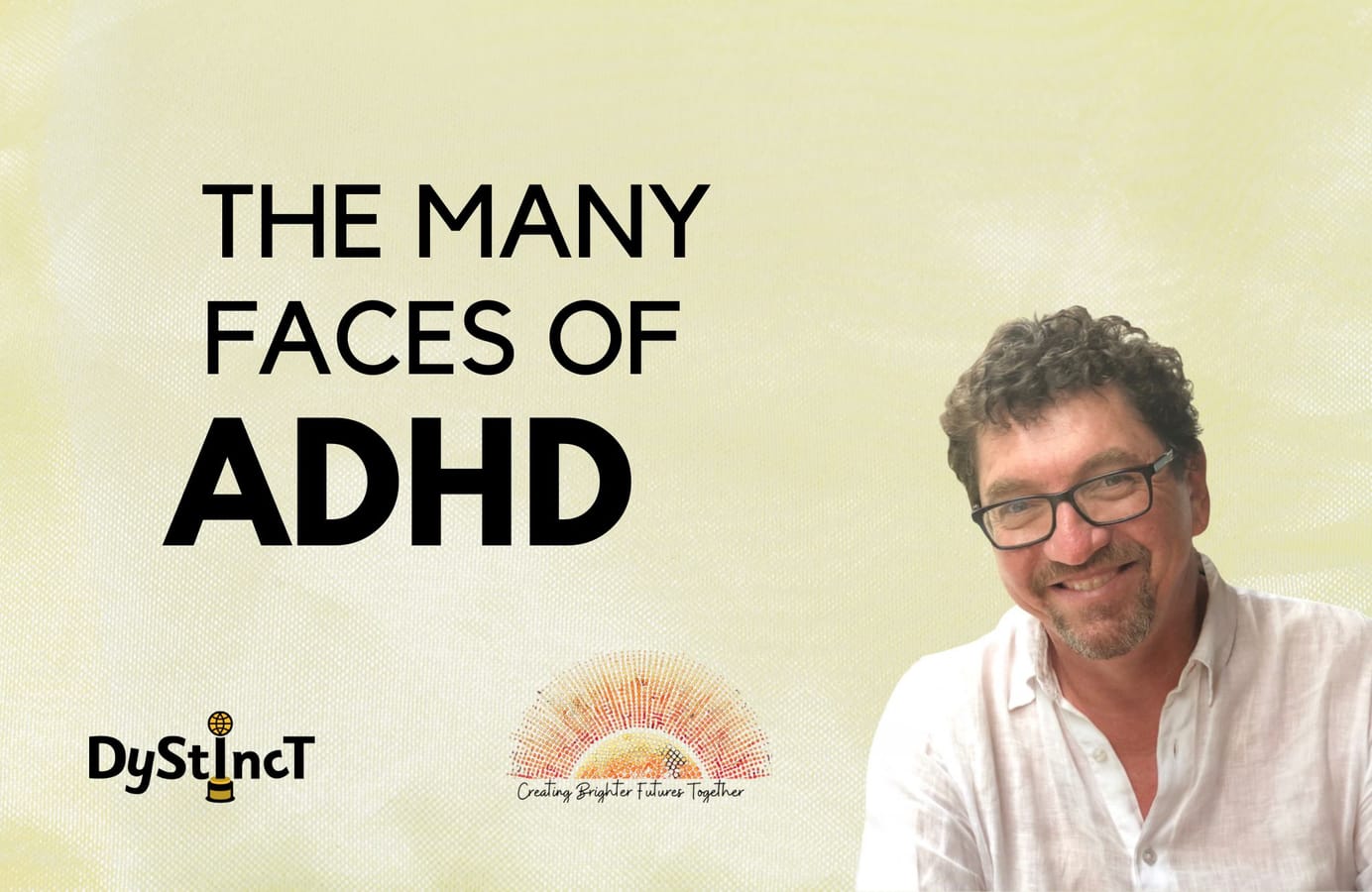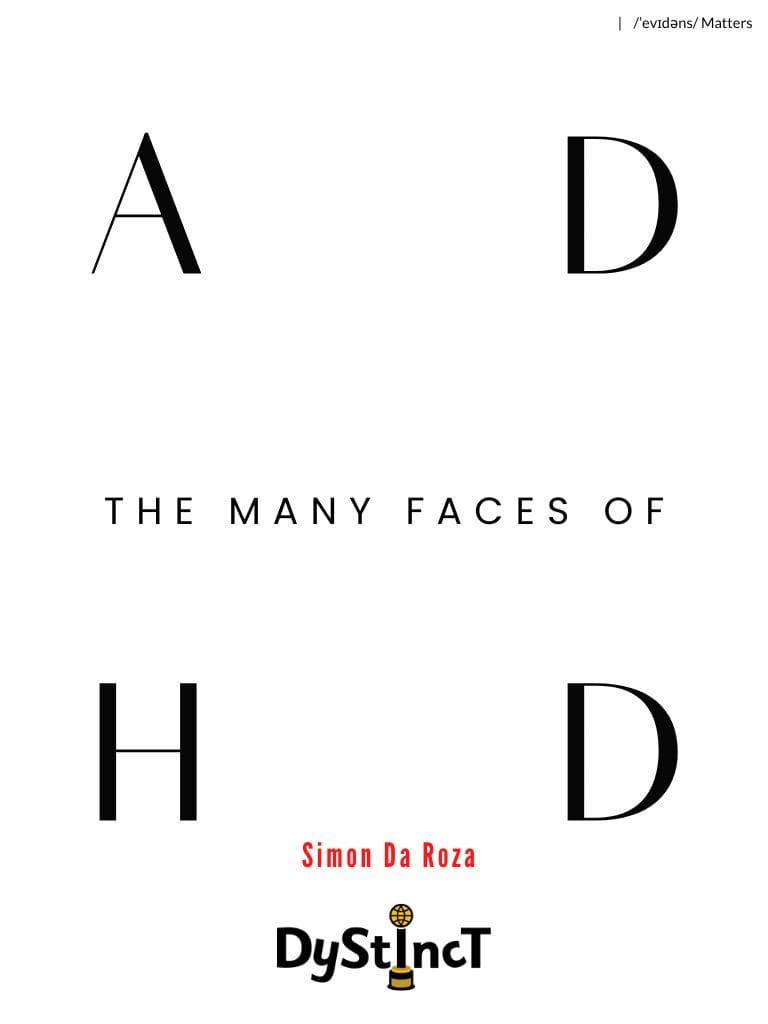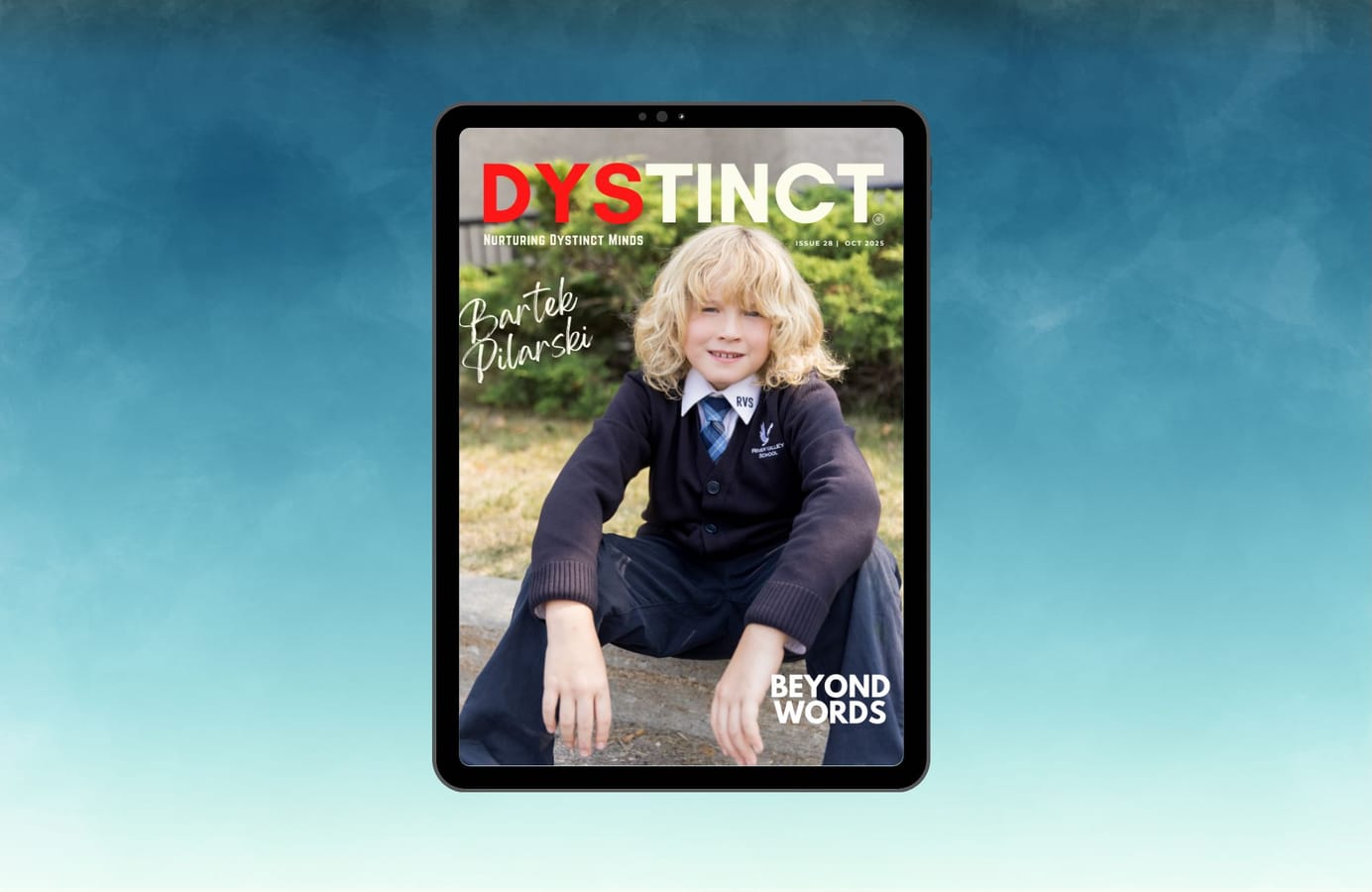
Issue 28: The many faces of ADHD | Simon da Roza
Simon da Roza reframes ADHD as a biopsychosocial difference existing at the intersection of neurology, cognition, and environment, challenging stereotypes and urging systemic change in schools, families, and workplaces so that strengths like curiosity, creativity, and rapid learning can thrive.

Celebrating Neurodiversity
Celebrating Neurodiversity
Let's take another look at the faces of ADHD; perhaps there is something we haven't noticed before. In this exploration, we may discover the untapped potential and unique perspectives that neurodiversity, including ADHD, brings to our world.
ADHD deserves a fresh reconsideration, re-evaluation, and re-envisioning, and potentially, we will appreciate it in a new light from a new perspective.
I was that kid who talked too much and moved too much. I forgot things, was lost, daydreamed, and often found myself in trouble for reasons I couldn't quite explain. I could never borrow library books as I never remembered to return them. I learned early that I was too much for some people and not enough for others. I walked out of class one day without my school bag, so excited that I had been selected by my teacher to leave first; it had never happened to me before. I didn't turn around till I had left the school gates. This was my daily struggle, a battle against a world that didn't see me or understand me.
I was also the kid who turned pen lids into sleek starships and rubbers into orbiting satellites. My ruler became a colossal space station, drifting relentlessly through an imagined galaxy of endless possibilities, every ink well (yes, showing my vintage). While teachers blabbed about fractions and spelling rules, I was charting interstellar routes and building empires beyond Saturn's rings. In my mind, bored beyond description, I created narratives and legends that sprang into action. I was a commander, a hero on the edge of discovery, surrounded by infinite worlds waiting to be explored. That daydreaming wasn't a sign of laziness or defiance; it was how young Simon managed to cope with the situation without support and understanding. It was curiosity untethered by gravity, an imagination set free from the pull of ordinary expectations.
Stop fidgeting, stop interrupting, stop forgetting and pay attention. Be less. Be more. Try harder to be like everyone else.
Looking back, it's clear what was happening. I was wired to scan, to question, to move and to imagine beyond what was in front of me. Those traits, now linked to ADHD, were already shaping who I would become. Yet the message I received as a child was simple: stop fidgeting, stop interrupting, stop forgetting and pay attention. Be less. Be more. Try harder to be like everyone else.
Years later, I learned something life-changing. I was not broken. Yet it still needed daily convincing that my brain was not defective. It was responding to a world that did not know how to support me.
ADHD is described as a neurological condition in the current DSM-5. There is strong evidence of differences in dopamine pathways and executive functioning. That is true, but I don't think we really see the environmental and contextual nature of ADHD. It is only a partial recognition of the real image of ADHD. ADHD is biopsychosocial. It exists at the intersection of neurology, cognition and the environment.
Schools built for compliance rather than curiosity are a daily mismatch for fast, energetic, sensitive brains.
A sensitive nervous system exposed to chronic stress, unpredictable caregiving and relentless academic pressure will amplify ADHD traits. Screens that spike dopamine and leave it crashing make regulation harder. Family fragmentation and economic stress drain parents' ability to co‑regulate and create predictable routines. Schools built for compliance rather than curiosity are a daily mismatch for fast, energetic, sensitive brains.
We have spent too long asking what is wrong with a person rather than addressing what is happening around them. ADHD is not only about differences within the brain but also about the environment in which those brains live.
The faces of ADHD are more diverse than the stereotype of a hyperactive boy bouncing off the walls. There are quiet, daydreaming girls who are overlooked because they do not disrupt. Teenagers who mask their intensity live with quiet exhaustion from rejection sensitivity. Adults raising children while managing their own ADHD balance life on a knife-edge every day. This diversity in presentations challenges the common misconceptions about ADHD and underscores the need for a more inclusive understanding of the condition.
ADHD is the canary in the coal mine of modern childhood and adulthood. It signals that something in our world is out of alignment. We cannot afford to ignore this warning. We must act, and we must act now. We need systemic change, a rethinking of our structures and institutions, to ensure that every individual, regardless of their neurodiversity, can not just survive but also thrive.
This post is for subscribers only
SubscribeAlready have an account? Log in


